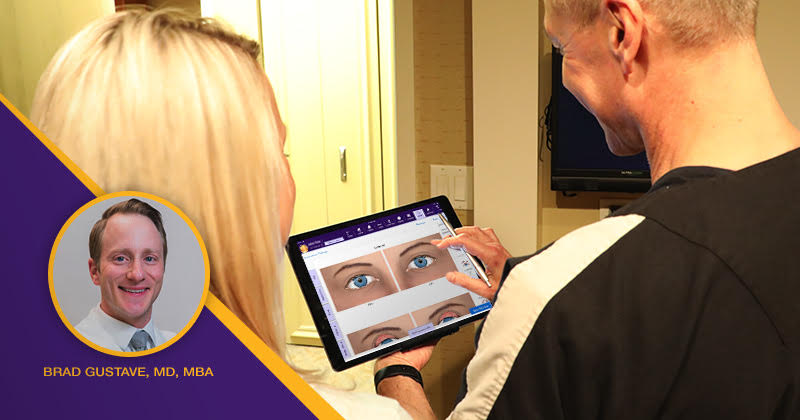Maximizing the Patient Encounter With Ophthalmology Software

How implementing an ophthalmology EMR system can help improve the patient experience
Some physicians feel that working with an ophthalmology electronic medical record (EMR) system during a patient visit is distracting and unwieldy, and therefore takes away from the patient encounter. I understand where they’re coming from; the act of documentation in any form, whether paper or EMR, can minimize the physician-patient interaction. But it doesn’t have to be that way. In fact, the patient’s experience improved in our busy cornea and general ophthalmic surgery practice with our use of an EMR.
Although we had a learning curve when we switched from paper, we have since found our ophthalmology EMR system to be an invaluable tool for making the most of our patient encounters. Gathering all the information required to comply with MIPS, ICD-10, and other healthcare regulations was an added bonus.
I have found two major keys to maximizing patient encounters with an EMR: Taking the time to understand how your physicians and staff like to work, and investing the time up front to fully master the system you choose.
Seek First to Understand
Preparation is key to help ensure practice workflow and the patient encounter are not interrupted. Understanding how your clinic and staff work most effectively — and how they will use an ophthalmology EMR system — will help streamline processes so you can stay focused on your patients.
For example, I like to use the Protocols feature to pre-populate my charts with most of the diagnoses I use on a daily basis. Our EMR system comes preloaded with ophthalmology knowledge built in, and I can easily customize protocols for each patient encounter. My “Surgical Cataract” Protocol, for instance, pulls in my exam preferences, standard pre-op cataract counseling documentation, OCT scan of the macula, topography, patient-specific counseling blocks, and follow-up instructions.
The vast majority of the work involved in documenting an encounter (including ICD-10, MIPS, and coding data) is already completed with one click; I simply enter and modify patient-specific items accordingly. Moreover, I reduce the number of clicks needed to generate a clean, thorough chart note. The end result: I get to spend more time talking with my patients face-to-face than with my head down keying in data.
It helps that our ophthalmology EMR system is available as a native iPad and iPhone app, and also has an intuitive desktop interface, enabling our physicians and staff to use what works best for them. In addition, it provides ePrescribing, seamless inter-physician communication, information input via protocols, and test results input and review, to further improve the efficiency of patient visits.
Taking Time to Master Your Ophthalmology EMR System
Our volume is such that scribes play a critical role in our ability to stay on time with appointments, which patients greatly appreciate. Without scribes, we might see half as many patients and spend countless hours finishing our notes. Our patients find it easier to schedule appointments with us because we have more availability, and we like that they stay in our practice.
However, not every practice can afford to employ scribes, which underscores the importance of investing time on the front end for your physicians and staff to become proficient with your ophthalmology EMR.
One of the biggest challenges is learning the most efficient way to “flow” through an encounter within a particular EMR system. It’s vital to get to know your system — where it queues important clinical, historical, and testing data, as well as other key features and benefits — to maximize efficiency. Indeed, once you understand how an EMR system can fit into the flow of your practice, working with one during patient encounters can be as seamless as paper documentation and allow for more face time with the patients — a win-win for everyone.
A Powerful Tool
The transition to EMRs has helped our practice tremendously. It has been a powerful tool to propel us toward improved efficiency, coding, billing, and compliance — and keeping happy patients.





